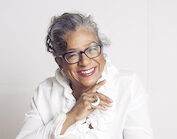Vicie A. Rolling of "Framing the Past", is a storyteller and oral historian who concentrates on telling the stories of African American life in the twentieth century. She says, "With historical research, I craft dialogue and narratives of their lives. I sometimes...

